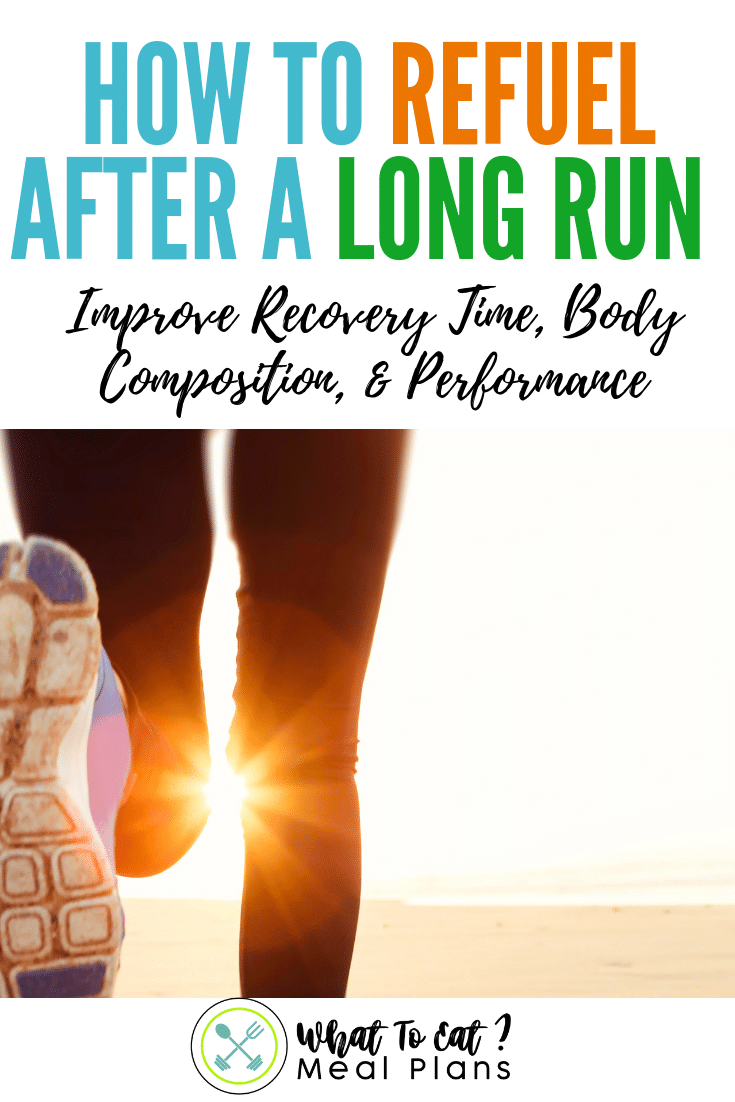Often times our meal plan subscribers and custom meal plan clients are athletes who have the goal of boosting performance while changing body composition. Together, these goals can be tricky to achieve because calorie deficits do not enhance recovery. The most effective strategy is to focus on fat loss early on in the training schedule when the intensity and miles are lower.

This may be counter-intuitive because you may think that as the miles increase it would be easier to lose weight. In fact, it’s very common to GAIN weight during the second half of training!
Heavy training increases a hormone called cortisol, your body’s natural stress hormone. Excess cortisol leads to weight gain through many mechanisms including increasing blood sugar and increasing sugar cravings. Inadequate recovery including poor nutrition and under eating often increases cortisol further.
So, if a runner inadequately refuels after a long run (ie under eats with the goal of weight loss) this may increase their cortisol and ultimately lead to weight gain. Managing cortisol is actually easier when the training schedule is lighter, which is why weight loss is easier and safer during that time.
When the runs start going over one hour long (whatever distance that may be for you) it’s recommended to replace 100 calories per mile. Those calories should come from as close to as possible a 3 to 1 ratio of carbohydrates to protein. This may be difficult as many foods are mixed and contain fats, so as close to that as possible will suffice.
Keep in mind:
- 1 gram of protein = 4 calories
- 1 gram of carbohydrate = 4 calories
- 1 gram of fat = 9 calories
Let’s do a couple of examples to help you figure out your additional needs over your baseline macros:
| Miles Over 1 Hour | Additional Calories Burned | Protein (g) | Carbohydrate (g) |
| 1 | ~100 | 10 | 20 |
| 2 | ~200 | 15 | 35 |
| 3 | ~300 | 20 | 55 |
| 4 | ~400 | 25 | 75 |
| 5 | ~500 | 30 | 90 |
| 6 | ~600 | 35 | 115 |
| 7 | ~700 | 40 | 135 |
| 8 | ~800 | 45 | 155 |
| 9 | ~900 | 50 | 175 |
But I run fast, don't I need more calories?
First, your body is more efficient at utilizing calories, so maybe or maybe not. Second, this should be built into your baseline macros. If you’re a custom WTE? Meal Plans client, your coach knows how to adjust baseline macros whether you run 4 miles in an hour or a half marathon. If you are a subscription-based client, listen to your body and follow the chart above. (Using the weekly meal plans on the subscription will still benefit you because it will ensure you are getting the adequate nutrition that is well timed throughout the day for a baseline, then you can add what's needed on top of it.)
Do you have to get in all those calories at once?
No! Definitely not! Some of these calories will be consumed in the form of training aids like Gus, gels, and sports drinks DURING THE RUN. Ideally post run you get in additional 100-300 calories within 30 minutes of finishing.
That’s a great time for liquid protein (like a shake) and simple sugar like that from dairy (yes chocolate milk is a great choice), added sugar, or fruit. Keep in mind your body can’t utilize more than 40 grams of protein at a time efficiently. You’ll want to split the remainder of calories up throughout the day adding them to your meals as evenly as possible.
So, it looks like this:
If you are counting macros you will use this formula to calculate your daily need:
Daily Macros + additional macros needed – macros consumed during training – macros consumed within 30 minutes of training = daily need
Ready to improve your sports nutrition? WTE? Meal Plans has several options for athletes designed by Registered Dietitian Kelli Shallal, including one on one coaching which can be paired with a basic meal plan subscription or custom plan!
More Running Tips
- 15 Tips for running with your dog
- What I wish I knew before I started running
- How to not skip your afternoon workout




Monica Johnston says
Does the same advice apply to a long and strenuous hike? If so, would the threshold for when to plan a recovery meal also be 1 hour or would it be longer? And would the formula have different macro ratios because running is more stead-state but a hike could be more like interval training?
Kelli Shallal MPH RD says
I love this question miss Monica!!!! I'd say yes! I mean some hikes are steady-state, but if there are a lot of hills then yes more like interval training.